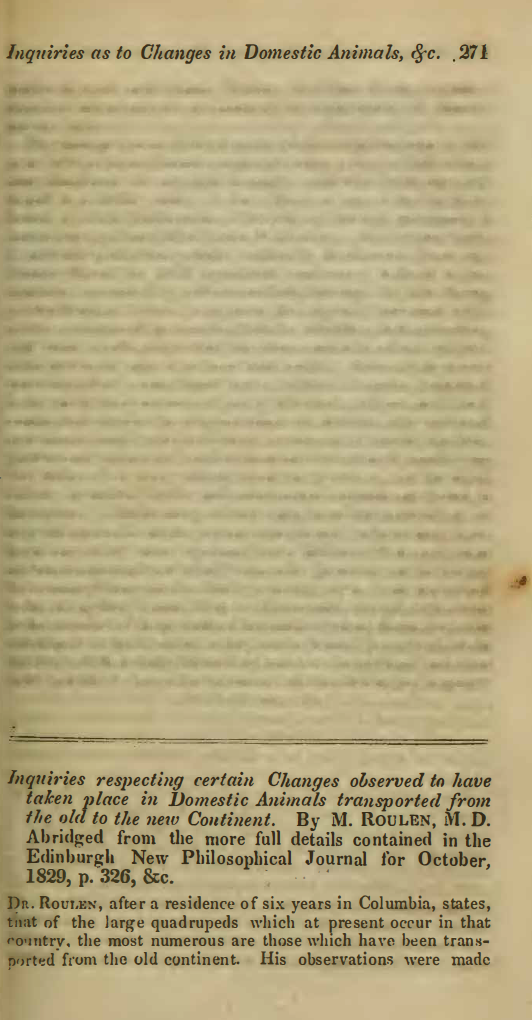Inquiries respecting certain changes observed to have taken place in domestic animals transported from the old to the new Continent
DOI:
https://doi.org/10.21504/saqj.13.2650Keywords:
Animal domestication, 19th-century zoology, Acclimatization -- Animals, Animal morphology, Columbia, New Grenada, Venezuela, St. Domingo, St. Martin (plains of), Cordillera, Pelones, Calungos, Aseasonal breedingAbstract
This article was abridged from the article in the Edinburgh New Philosophical Journal for October, 1829, p. 326-.
This article presents the observations of Dr M. Roulen on the morphological and behavioural changes observed in domestic animals transported from the Old Continent to the New World.
Dr Roulen details the effects of naturalisation on several species. Hogs, originally brought to the Americas by Columbus in 1493, quickly ran wild, losing their "marks of servitude" and developing erect ears, a broader head, and a permanent black colour, closely resembling the wild boar. Cattle multiplied rapidly, but the maintenance of large herds required a supplemental supply of salt, without which they perished or became entirely wild; thin-haired (pelones) and naked-skinned (calungos) varieties were also observed in warmer regions. Horses in the wild state often developed a uniform chestnut colour, while those domesticated on the Cordillera exhibited more varied colours and sizes. Furthermore, selective training for the amble pace led to this gait becoming the natural pace of the resulting race.
The sheep carried from Spain often failed to thrive in warmer areas, and those kept in the lowlands lost their wool, which was replaced by short, shining hair—a notable adaptation. Conversely, the ass and the cat underwent minimal morphological changes, although the cat ceased to have a distinct breeding season. The author notes that domestic fowls (chickens) also showed adaptive changes, with Creole chickens hatching with little down, while newly imported English breeds retained a thick down, indicating that it is the race, not just the individual, that must naturalise.
Dr Roulen concludes that transportation to a new climate necessitates the naturalisation of the race, leading to durable changes that align the animals' organisation with their new environment, and that a return to independent habits quickly restores the characters of the original wild species.
Downloads

